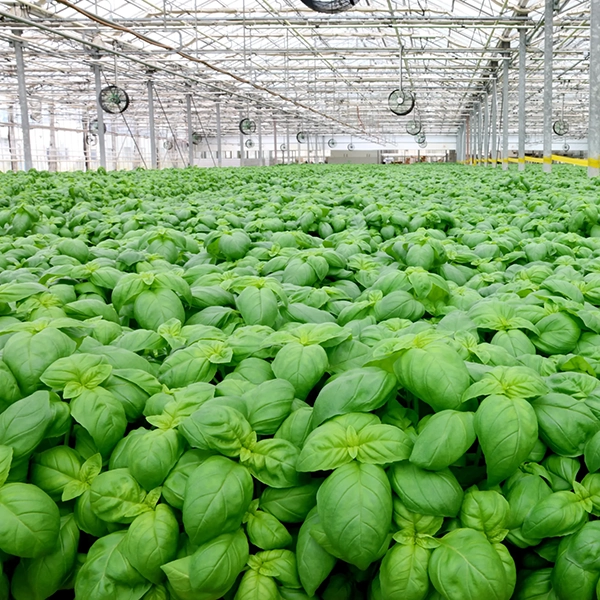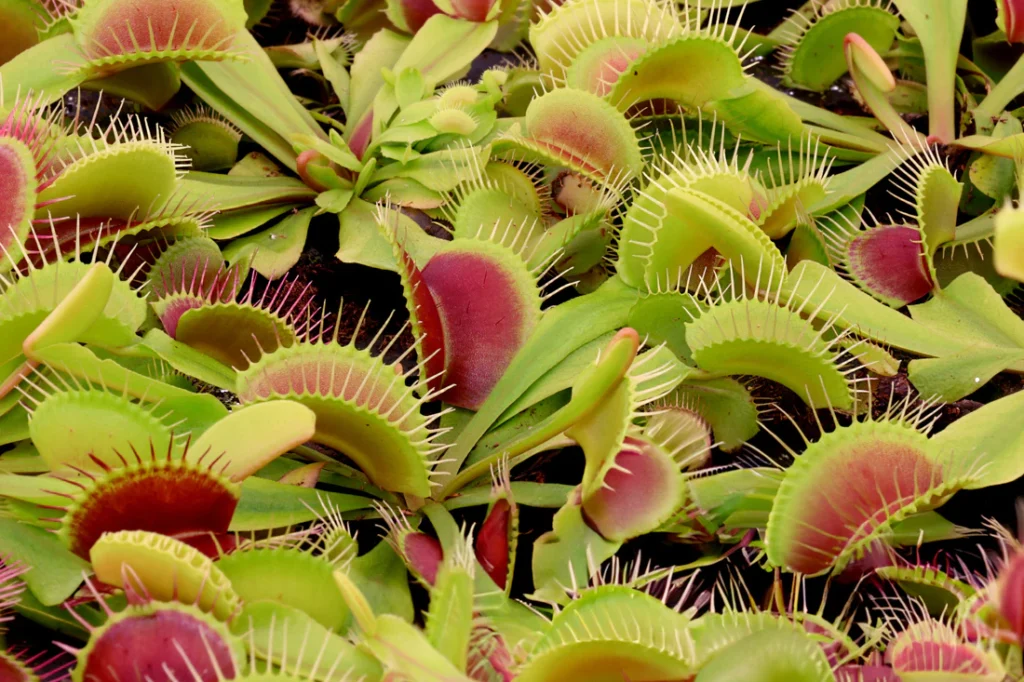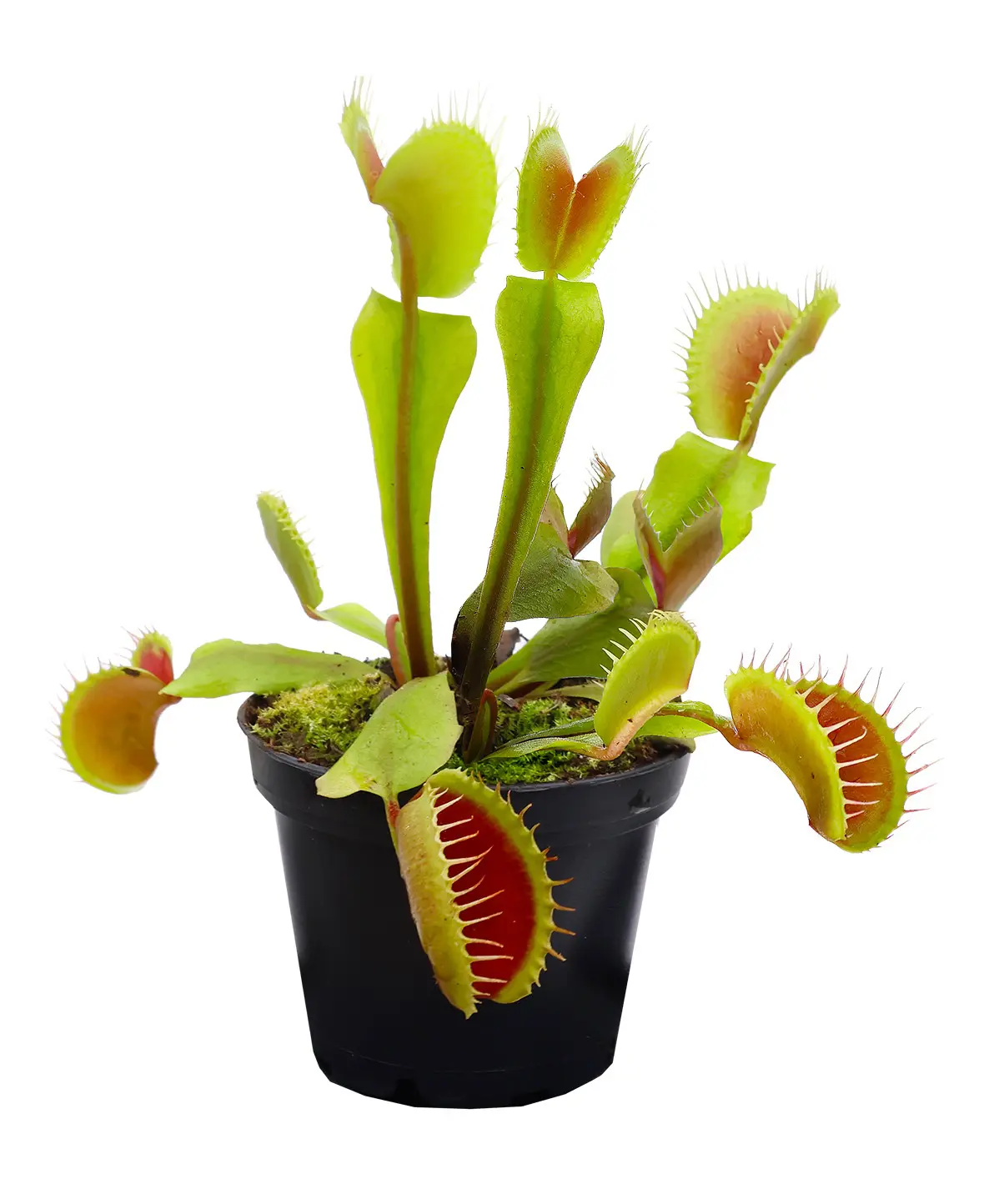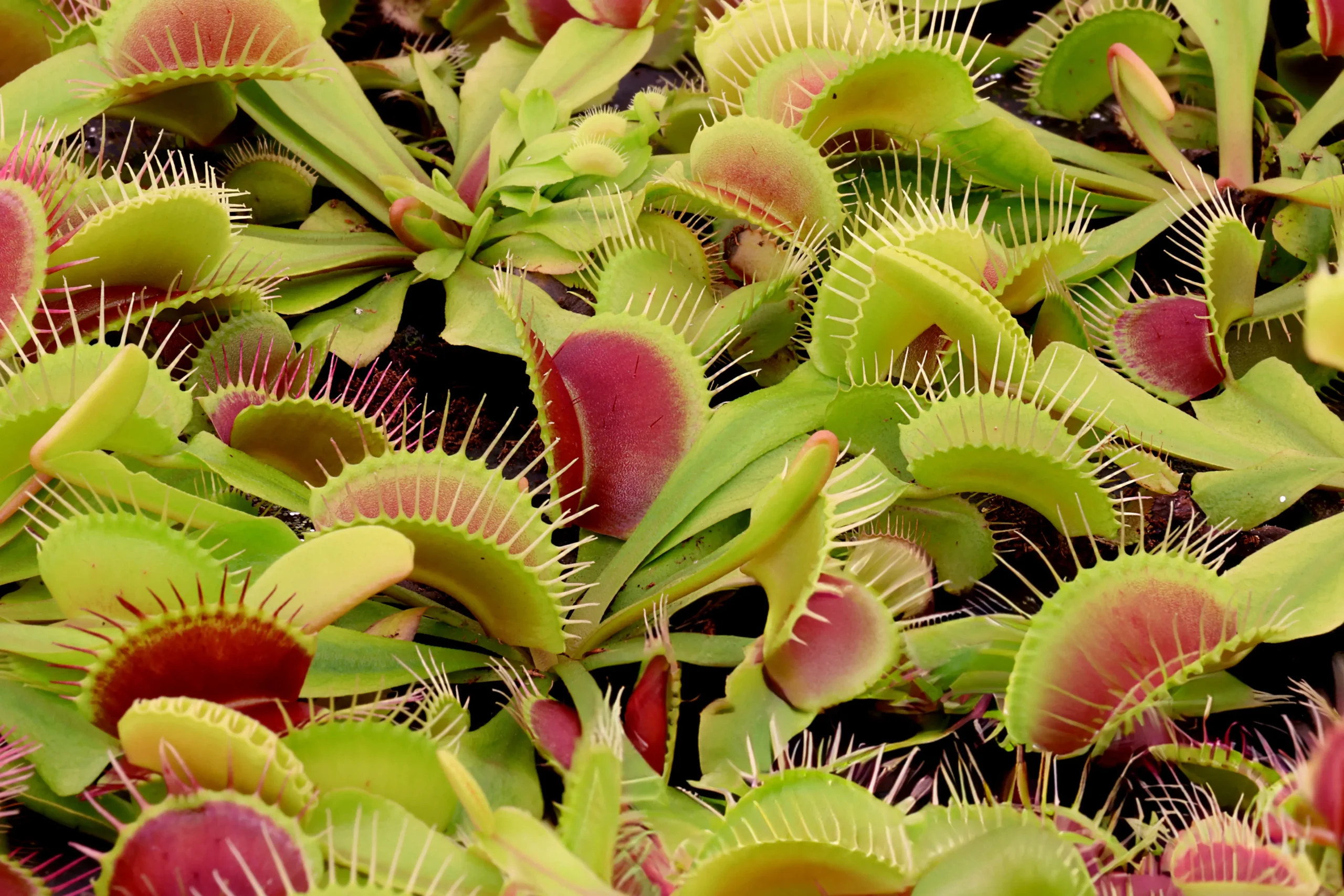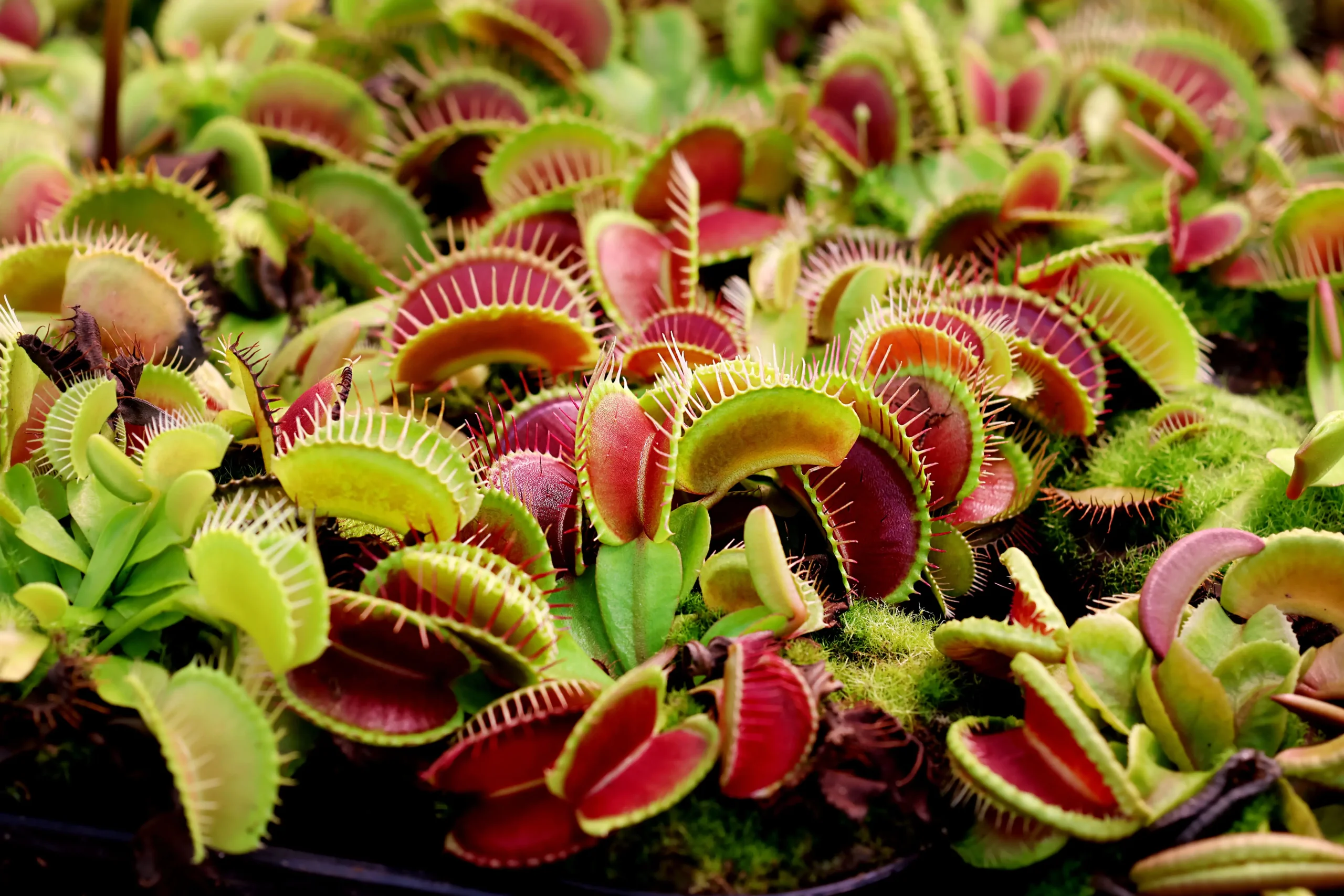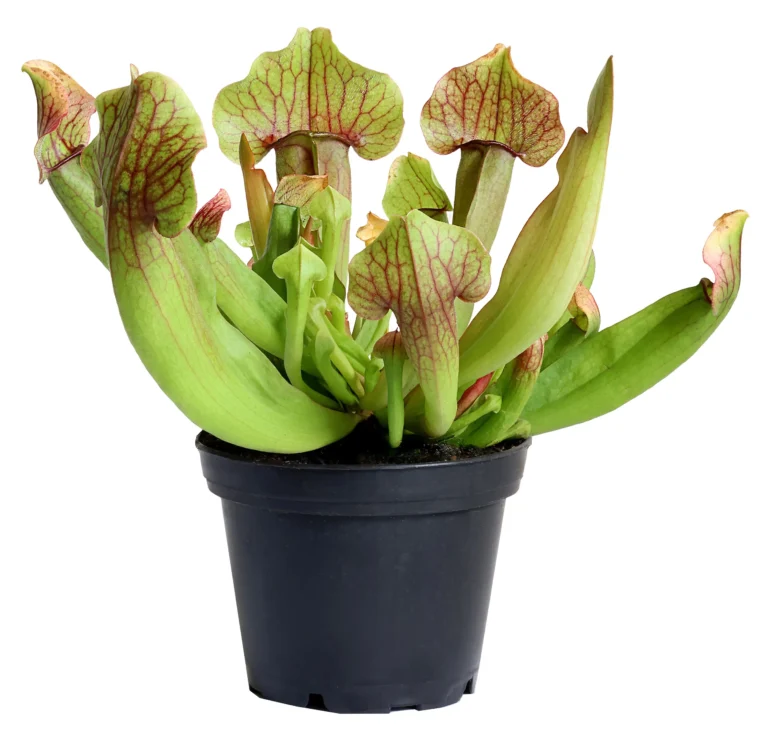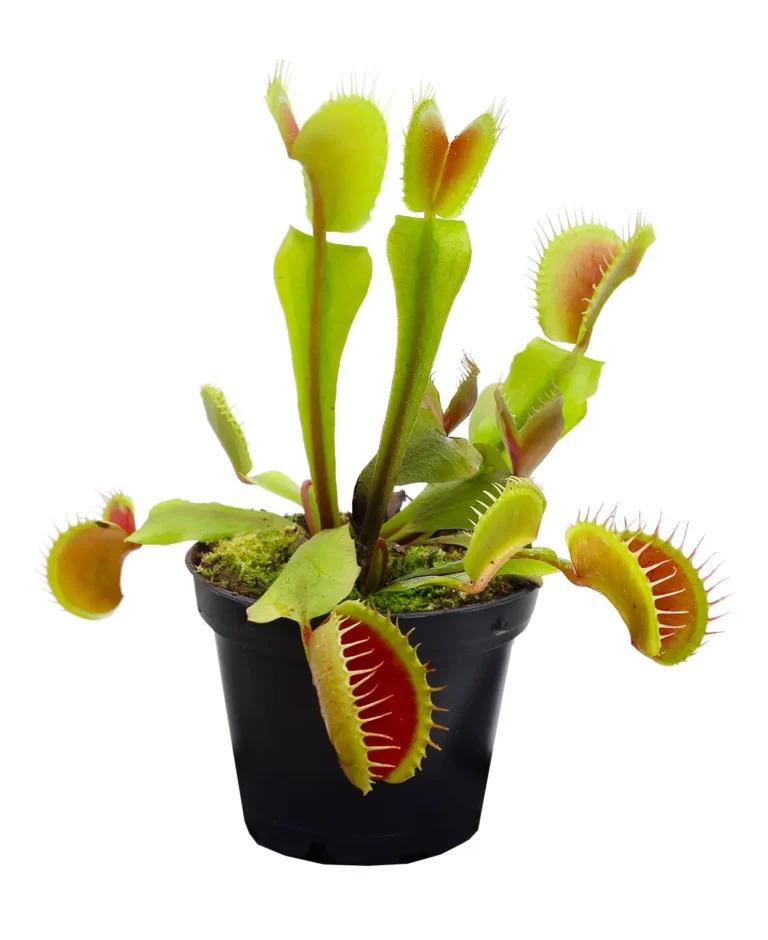Venus Fly Traps originate from the wetlands of the Carolinas. Renowned for their unique ability to trap and digest insects, these low-growing perennials feature jaw-like structures triggered by sensitive hairs. Adaptable to various environments, they thrive in acidic, nutrient-poor soils and require ample sunlight. Venus Fly Traps showcase nature’s ingenuity, serving as both intriguing curiosities and effective pest controllers in homes and gardens.
Menu

